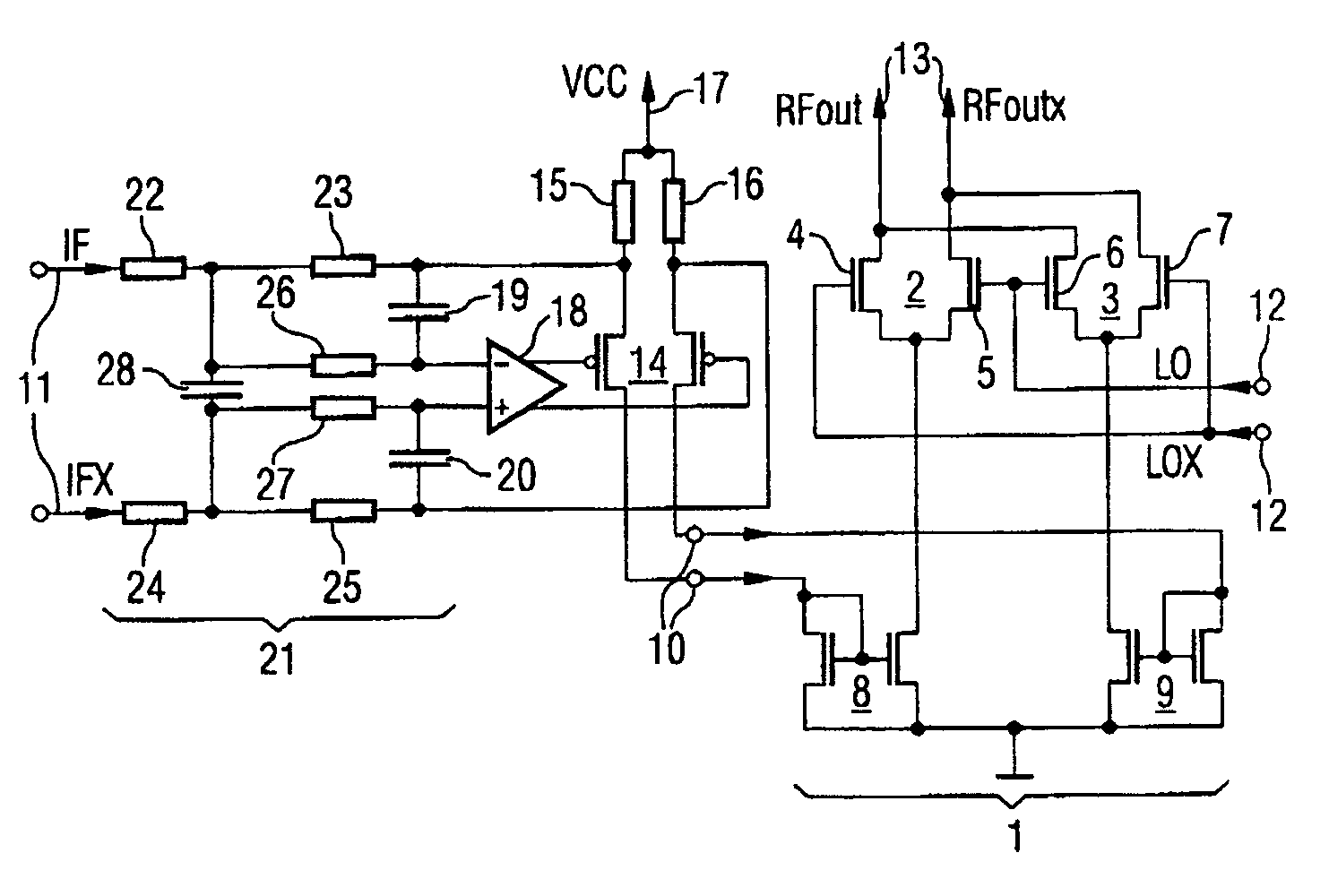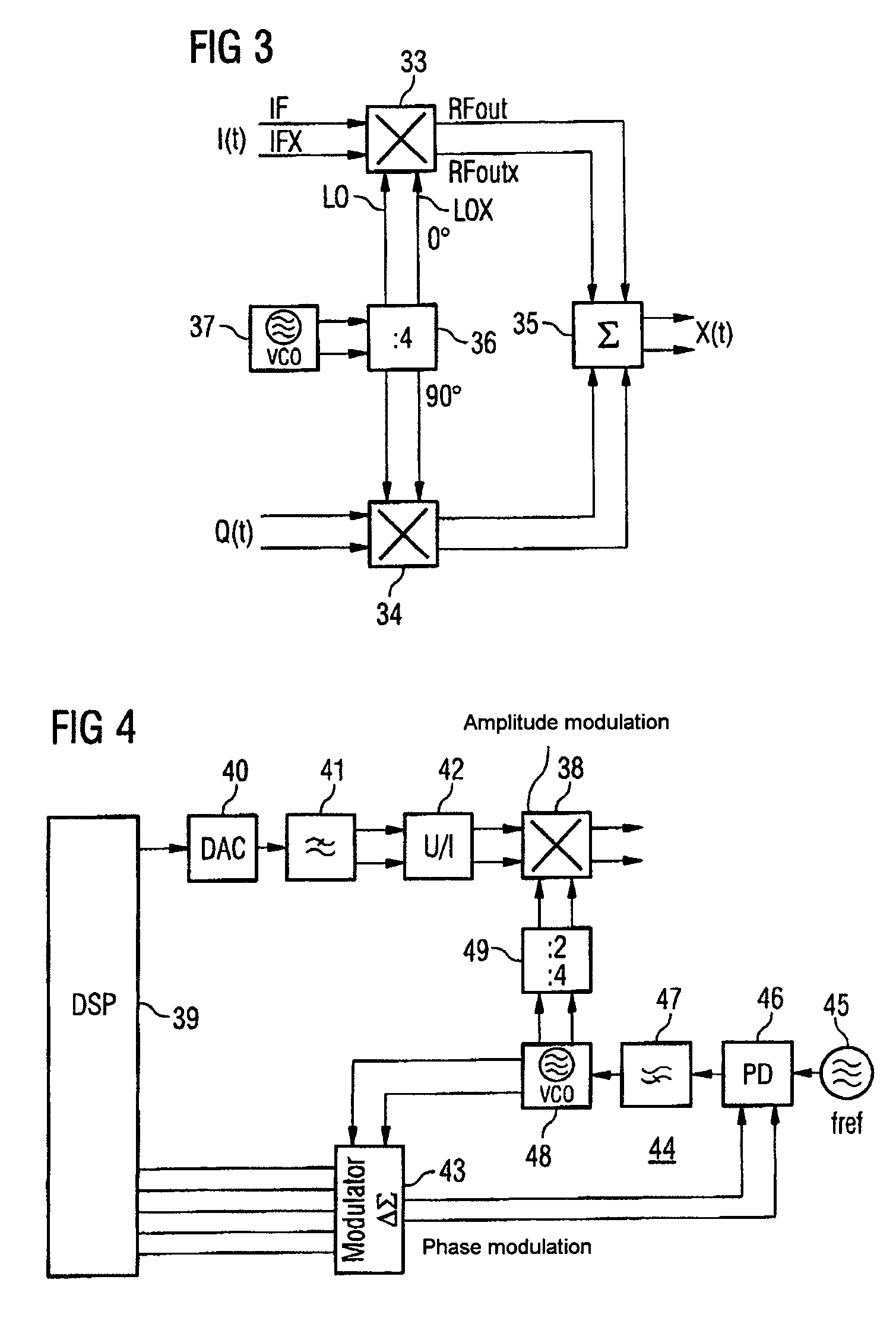Radio-frequency mixer arrangement
a mixer and frequency technology, applied in the field of radio frequency mixer arrangement, can solve problems such as noise at the modulator output, and achieve the effects of reducing the negative-feedback resistance, reducing the linearity of differential amplifiers, and high baseband amplitude withou
- Summary
- Abstract
- Description
- Claims
- Application Information
AI Technical Summary
Benefits of technology
Problems solved by technology
Method used
Image
Examples
Embodiment Construction
[0041]FIG. 1 shows a radio-frequency mixer arrangement having a Gilbert multiplier 1 which comprises two differential stages 2, 3. The differential stages 2, 3 each have two n-channel MOS differential transistors 4, 5; 6, 7 whose sources are connected to one another in respective pairs. The common source connections of the differential stages 2, 3 are connected to an input current interface 10 on the multiplier 1 via a respective current mirror 8, 9. A first signal input 11, which is designed to supply a differential signal and accordingly comprises two input terminals, is coupled to the current interface 10 via a block with an antialiasing filter, an operational amplifier and differential amplifier, as explained in more detail below. The first signal input 11 can have a baseband or intermediate frequency signal IF, IFX supplied to it.
[0042]A second signal input 12 on the multiplier 1 is likewise designed to supply a differential signal and, in the present case, is designed to suppl...
PUM
 Login to View More
Login to View More Abstract
Description
Claims
Application Information
 Login to View More
Login to View More - R&D
- Intellectual Property
- Life Sciences
- Materials
- Tech Scout
- Unparalleled Data Quality
- Higher Quality Content
- 60% Fewer Hallucinations
Browse by: Latest US Patents, China's latest patents, Technical Efficacy Thesaurus, Application Domain, Technology Topic, Popular Technical Reports.
© 2025 PatSnap. All rights reserved.Legal|Privacy policy|Modern Slavery Act Transparency Statement|Sitemap|About US| Contact US: help@patsnap.com



